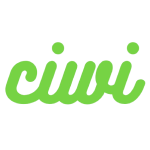Pricing your products correctly is one of the most critical factors for Shopify store success. The right pricing strategy can increase conversions, boost profits, and reinforce your brand. In 2025, with growing competition and savvy buyers, understanding Shopify product pricing strategies is essential.
Overview of Shopify Product Pricing Strategies
| Pricing Strategy | Description | Example | Pros | Cons | Best Use Case |
|---|---|---|---|---|---|
| Cost-Plus Pricing | Price = product cost + markup | Cost $20, markup 50% → Price $30 | Simple, ensures profit | Doesn’t reflect market demand | New products, startups |
| Value-Based Pricing | Price based on perceived customer value | Unique product priced at $80 because customers see high value | Can maximize revenue, highlights product value | Requires strong branding & proof of value | Premium or unique products |
| Competitor-Based Pricing | Adjust price based on competitor pricing | Competitor sells $25 → you price $24 or $26 | Stay competitive, easy to benchmark | Doesn’t consider your costs or value | Highly competitive markets |
| Dynamic Pricing | Prices adjust based on demand, seasonality, or behavior | Peak season: $50 → off-season: $40 | Maximizes revenue, flexible | Can confuse customers if too frequent | Seasonal products, trending items |
| Psychological Pricing | Prices appeal to human perception | $9.99 instead of $10 | Increases conversions | Minimal impact on profit margins | Most consumer products |
| Tiered Pricing / Bundles | Offer multiple quantities or bundled products | 1 for $20, 2 for $35, bundle of 3 → $50 | Boosts average order value, encourages bulk purchases | Can reduce profit margin per unit | Upselling, bundle promotions |
Cost-Plus Pricing: Cover Your Costs and Ensure Profit
Cost-plus pricing is the simplest way to price your products. Calculate your total product cost and add a markup.Example:
- Product cost: $20
- Desired markup: 50%
- Selling price = $20 × 1.5 = $30
Pros: Simple, ensures you cover costs.
Cons: Doesn’t account for customer perception or market demand.
Value-Based Pricing: Price Based on Customer Perception
Value-based pricing sets your price according to how much the product is worth to the customer. Ideal for premium or unique products.Tips:
- Emphasize benefits and outcomes clearly.
- Use testimonials or case studies to prove value.
- Compare with competitors to justify higher pricing.
Competitor-Based Pricing: Stay Competitive
Analyze competitors’ prices and adjust your pricing strategy.Strategies:
- Slightly lower pricing for budget-conscious buyers.
- Slightly higher pricing to signal premium quality.
- Regularly monitor competitor pricing and adjust dynamically.
Dynamic Pricing: Adjust Prices According to Demand
Dynamic pricing involves adjusting your product prices based on market demand, seasonality, or customer behavior. Many Shopify apps can automate this.Examples:
- Increase prices during peak shopping seasons.
- Limited-time flash discounts.
- Rule-based automated pricing via Shopify apps.
Psychological Pricing: Influence Buyer Decisions
Leverage human psychology to make prices more appealing.Tactics:
- Use $9.99 instead of $10.
- Offer “Buy 2, Get 1 Free.”
- Highlight savings: “Save 20% today!”
Tiered Pricing & Product Bundles: Boost Average Order Value
Encourage customers to buy more with tiered pricing or bundles.Examples:
- Buy 1 for $20, 2 for $35, 3 for $50.
- Bundle complementary products to increase total purchase value.
Test, Monitor, and Optimize Your Prices
Pricing is not static. Continuously optimize based on analytics:
- Conduct A/B tests with different price points.
- Track conversion rates and average order value.
- Adjust prices based on customer feedback and market trends.
FAQ: Shopify Product Pricing
Q1: How do I start pricing my Shopify products?
A1: Start with a cost-plus approach, then adjust using value-based and competitor-based pricing strategies.Q2: Should I use dynamic pricing for all products?
A2: Dynamic pricing works best for seasonal, high-demand, or trending products. Use apps to automate adjustments.Q3: How do product bundles affect pricing?
A3: Bundles encourage larger purchases and increase average order value, which improves overall revenue.Q4: Can I change prices often?
A4: Yes, but track analytics carefully. Too frequent changes may confuse customers.
Conclusion
Effective Shopify product pricing in 2025 combines multiple strategies: cost-plus, value-based, competitor-based, dynamic, psychological, and bundle/tiered pricing. By testing, monitoring, and optimizing, your Shopify store can boost conversions, increase profits, and deliver a better customer experience.


